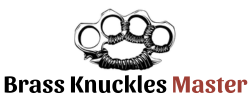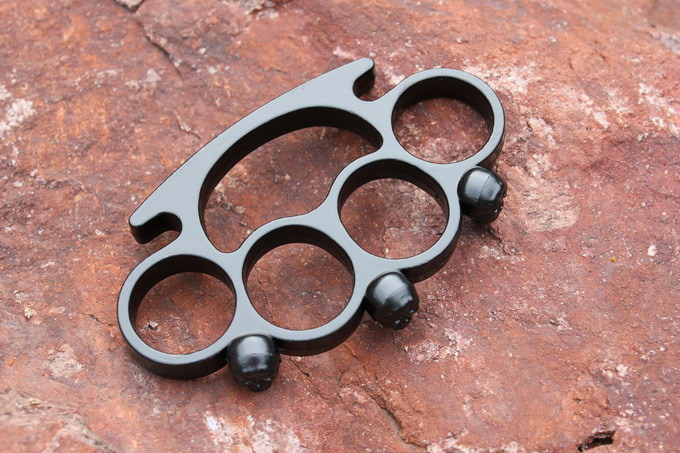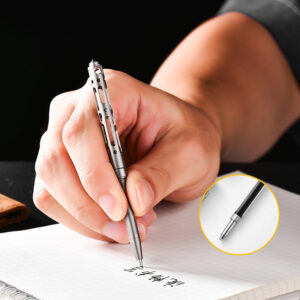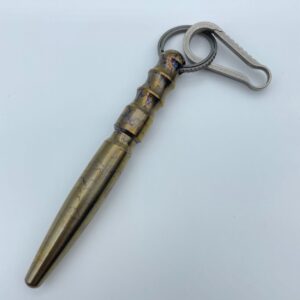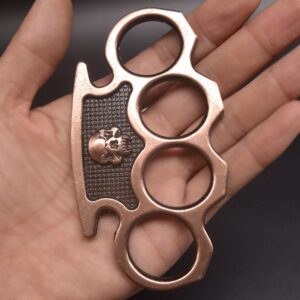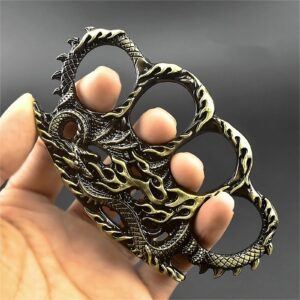No products in the cart.
Brass Knuckles vs. Tactical Pens: Which Is Smarter for Defense?
When it comes to self-defense tools, choosing the right option can mean the difference between safety and legal trouble. Two popular choices—brass knuckles and tactical pens—offer different advantages and drawbacks. But which one is smarter for personal protection?
This in-depth comparison covers:
- Effectiveness in self-defense situations
- Legal status across the U.S.
- Ease of carry and concealment
- Training and skill requirements
- Potential risks and limitations
Whether you’re a self-defense enthusiast or just looking for a reliable protective tool, understanding these key differences will help you make an informed decision.
1. Effectiveness in a Self-Defense Scenario
Brass Knuckles: Raw Striking Power
Brass knuckles (or knuckle dusters) are designed to amplify punching force. Made from metal, polymer, or composite materials, they concentrate impact on small pressure points, increasing damage to an attacker.
Pros:
✔ Devastating striking power – Can break bones or incapacitate with a well-placed hit.
✔ Simple to use – Requires minimal training (basic punching skills).
✔ Intimidation factor – The sight of brass knuckles may deter some attackers.
Cons:
❌ Close-range only – Useless if the attacker has a weapon or keeps distance.
❌ Risk of hand injury – Poor strikes can damage the user’s fingers.
❌ No defensive utility – Doesn’t help block or parry attacks.
Tactical Pens: Discreet but Versatile
A tactical pen looks like an ordinary writing tool but is built from aircraft-grade aluminum or steel, functioning as a striking, stabbing, or pressure-point tool.
Pros:
✔ Legal almost everywhere – Easier to carry without legal issues.
✔ Dual-purpose – Functions as both a writing tool and a weapon.
✔ Better reach – Can target eyes, throat, or nerves from a safer distance.
✔ Defensive applications – Can be used to block or disarm in some cases.
Cons:
❌ Less stopping power – Requires precise strikes to be effective.
❌ Training needed – Proper technique is crucial for maximum effect.
❌ Less intimidating – Attackers may not take it seriously at first glance.
Verdict:
- Brass knuckles win in raw striking power but are limited to close combat.
- Tactical pens offer more versatility and legality but require skill to use effectively.
2. Legal Status: Which One Can You Carry Without Issues?
Brass Knuckles: A Legal Minefield
Laws on brass knuckles vary drastically:
✅ Legal in some states (e.g., Texas, Arizona)
❌ Banned in others (e.g., California, New York, Illinois)
⚠️ Restricted in many areas (e.g., schools, government buildings)
Even where legal, carrying them concealed can lead to weapons charges in certain jurisdictions.
Tactical Pens: Widely Acceptable
Most states do not regulate tactical pens as weapons since they resemble ordinary pens. However:
✔ Generally legal nationwide (check local laws for restrictions).
✔ Allowed in places where weapons are banned (airports, courthouses—if used as a pen).
Verdict:
- Tactical pens are the clear winner for legal carry in most areas.
- Brass knuckles come with significant legal risks depending on location.
3. Concealment and Everyday Carry (EDC)
Brass Knuckles: Hard to Hide
- Bulky design makes them difficult to conceal.
- Printing through clothing can alert others.
- Risk of discovery in pat-downs or bag checks.
Tactical Pens: Ultimate Discretion
- Looks like a normal pen—no suspicion.
- Fits in pockets, bags, or clipped to clothing.
- No issues in security checks (unless used aggressively).
Verdict:
- Tactical pens excel in stealth and convenience.
- Brass knuckles are harder to carry discreetly.
4. Training and Skill Required
Brass Knuckles: Minimal Training Needed
- Basic punching technique is enough.
- No complex skills required.
Tactical Pens: Technique Matters
- Requires knowledge of pressure points.
- Effective use involves striking, jabbing, and defensive moves.
- Training resources (videos, classes) improve effectiveness.
Verdict:
- Brass knuckles are easier for beginners.
- Tactical pens reward those willing to train.
5. Potential Risks and Drawbacks
Brass Knuckles Risks
- Legal consequences if carried in restricted areas.
- Escalates fights quickly—may lead to excessive force claims.
- No defensive utility (can’t block knives or other weapons).
Tactical Pens Risks
- Less stopping power against determined attackers.
- Requires precision under stress.
- May break if misused.
Final Comparison:
| Feature | Brass Knuckles | Tactical Pen |
|---|---|---|
| Striking Power | High | Moderate |
| Legal Carry | Restricted | Widely Allowed |
| Concealment | Poor | Excellent |
| Training Needed | Low | Moderate-High |
| Versatility | Low | High |
Which One Should You Choose?
The answer depends on:
- Your local laws (avoid brass knuckles if banned).
- Your training level (tactical pens need practice).
- Your daily environment (urban vs. high-risk areas).
For most people, a tactical pen is the smarter, more practical choice. But if you prioritize raw power and live where they’re legal, brass knuckles remain an option.
